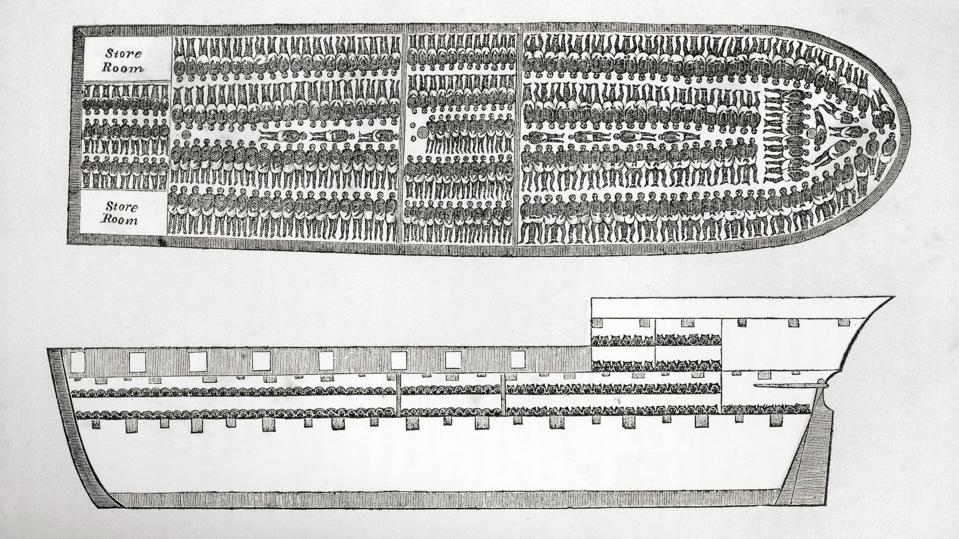The transatlantic slave trade is a painful part of world history. It represents one of the largest forced migrations, displacing 12.5 million Africans from their homelands. The trade was also responsible for the repopulation of the Americas, catapulting the institution of slavery and slave trading into foundational parts of the world economy. Seven European countries (Britain, France, the Netherlands, Spain, Denmark, and Portugal) participated in this traffic in human souls, which lasted from about 1526-1867. This might seem like a long time ago, but it is important to understand how are we still connected to the slave trade and how we can best teach this difficult history.
In 2018, the 500-year anniversary of the buying and selling of humans between Africa and the Americas quietly passed. It was not a commemoration that was celebrated. In fact, the slave trade is largely ignored in contemporary discussions of history outside of academic settings. Historians such as Herman Bennett, Jennifer L. Morgan, David Wheat, and many others write about the initial transactions because any teaching of the transatlantic slave trade must begin with the origins of this forced migration.
On August 18, 1518, Charles I, the King of Spain issued a charter that authorized the transportation of captive Africans directly from Africa to America. Prior to this, most captives went to Spain and Portugal before being transhipped, (the change or transfer from one ship to another) to the Caribbean. Morgan and Bennet offer descriptive histories of the experience in Africa, Spain, and Portugal. Their work reminds us that we cannot oversimplify how human beings become commodities. This is also the starting point for students who want to know how the trade in humans began. How did a person become more valuable than other goods?
The history of the slave trade for school-aged and college students must start with the experiences in Africa between African kings and European traders; it should involve an understanding of the voyages from Africa to Spain and Portugal, prior to any discussion of the graphic histories of the Middle Passage and the arrival in the Caribbean and Americas. Well-established trade networks were in place throughout the African continent. However, it was traders who Morgan writes, “had the notion that they could transform human beings into wealth, assigning them a value that rendered them exchangeable and distributable.” This alchemy situated “kinship as a commodity.”[i] These traders interacted with African Kings and negotiated captivity, sovereignty, and kinship. Bennett teaches us that much of our knowledge of the early interactions between European travelers and African people oversimplified the interactions and exchanges between nations. By “reducing the earliest encounter with Africa to the slave trade and slavery to a New World commercial phenomenon, we have lost sight of a distinct narrative of power in Africa” and a recognition that Africans were “more than objects acted upon.”[ii] Our starting point when teaching students about the slave trade should begin with a brief history of Africa and Africans, from whom many of us are descended and are directly linked through DNA.
In 2020, the American Journal of Human Genetics published an article with groundbreaking information about genetic connections to the transatlantic slave trade. Researchers examined DNA evidence collected from 23andMe, ship records from the Slavery Voyages website, and other sources that found significant levels of African ancestry in Americans, British Caribbeans, Guineans and Cape Verdeans. They also confirmed something many historians already knew: sexual exploitation of African women was quite common. This evidence links more people to African history and ancestry than had been previously known. However, DNA experts like Alondra Nelson, author of The Social Life of DNA, and Gina Paige of African Ancestry highlight some of the complexities of this work. They note that while using genetics to tell more in-depth stories about our shared history is important, our stories need to include more African ethnic groups than the study produced and more work from historians who understand this complex history. Yet, some people are leery of DNA testing, especially given trust issues related to scientific testing and fears of racial profiling resulting from the Tuskegee Syphilis Experiment and the case of Henrietta Lacks.
Teaching students that they have genetic connections to the transatlantic slave trade offers educators a unique entry point into discussions of African history and the origins of many nations. It provides a foundation that includes African agency, freedom, and kinship prior to the notion of Africans as enslaved objects of oppression. Drawing upon the work of historians, historical records, and DNA evidence, students can engage in an interactive history, one that continues to offer new directions for further study. More important, it shows how so many people around the world are connected to this history—it’s in our DNA.
[i] Jennifer L. Morgan, Reckoning with Slavery: Gender, Kinship, and Capitalism in the Early Black Atlantic (Durham: Duke University Press, 2021), 24.
[ii] Herman L. Bennett, African Kings and Black Slaves: Sovereignty and Dispossession in the Early Modern Atlantic (Philadelphia: University of Pennsylvania Press, 2018), 13.

